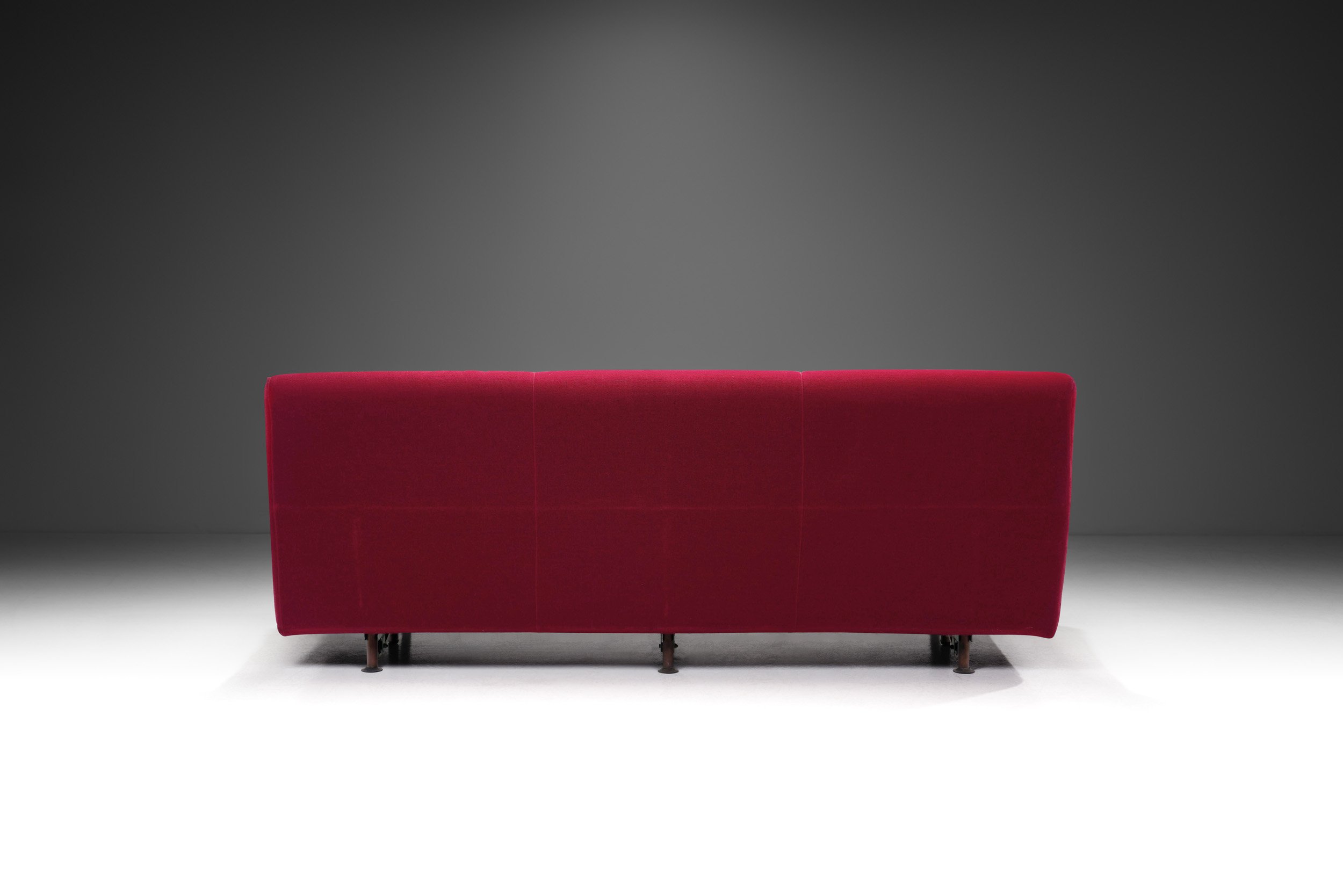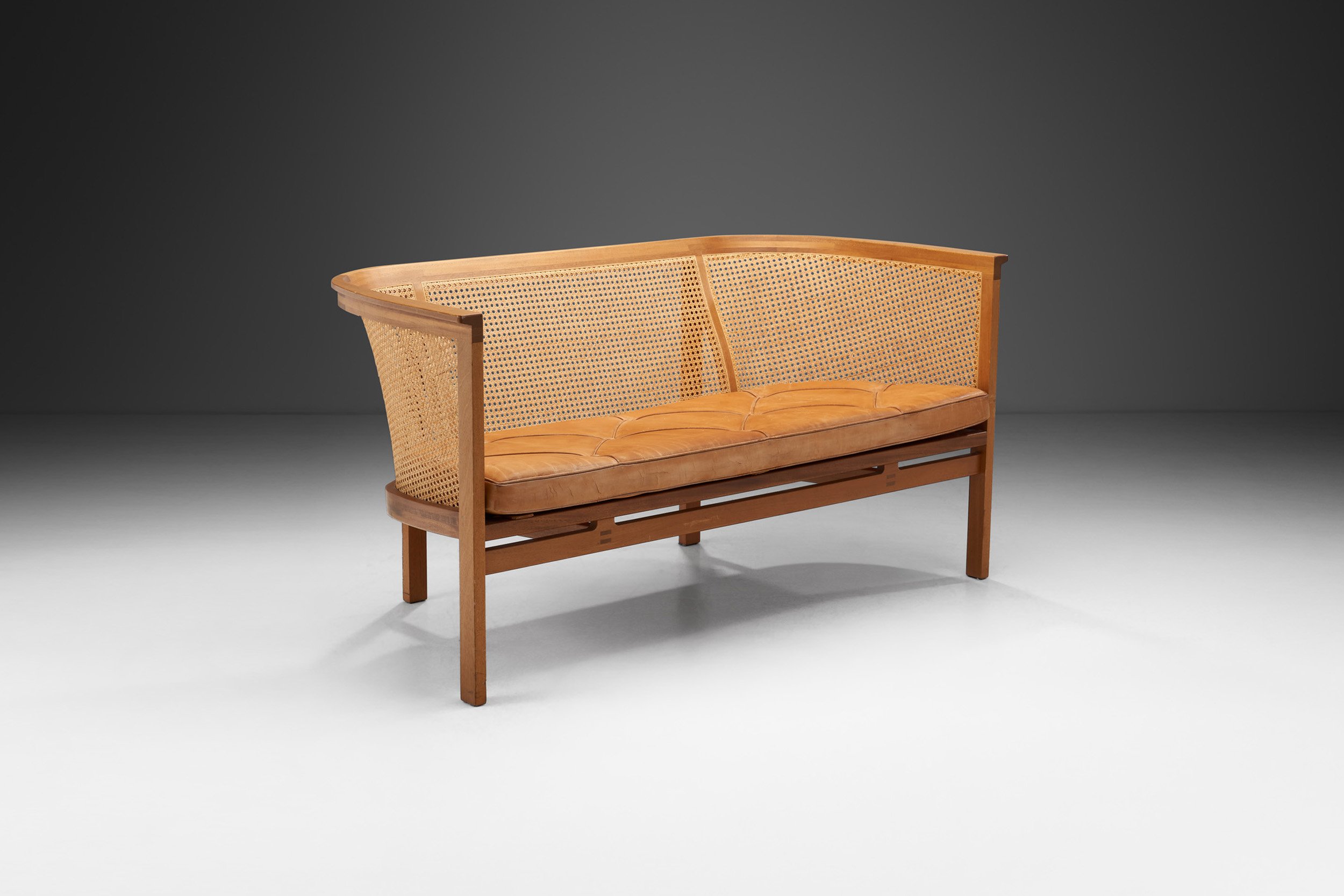Marco Zanuso "IX Triennale" Sofa for Arflex, Italy 1950s















Marco Zanuso "IX Triennale" Sofa for Arflex, Italy 1950s
REQUEST PRICE HERE
Price category: 2,500 - 5,000 usd / eur
“There is no border between craftsmanship and design. What we do on the model, which will then be reproduced a thousand times, is an activity in which we bring all our experience.” said Zanuso, and there is no better visual example of his quote than this sofa.
Marco Zanuso was one of the first to apply new materials and technologies to everyday objects. Gold medal at the Milan Triennial IX, his Lady armchair revolutionized the very concept of sitting. The use of foam rubber and elastic tape, as well as the separate construction of the parts and their subsequent assembly, represented the birth of modern upholstered furniture. This sofa has an essentially modern design. This model was first presented by Marco Zanuso at the IX Triennale di Milano in 1951, hence the name. With a full fabric covering and foam rubber padding on elastic ribbons, this model was one of the first sofas made with very innovative materials and techniques for the time. The design is streamlined, showing Zanuso's design philosophy that was rooted in the principles of functionality, Italian elegance, and comfort. The IX Triennale Sofa embodies these ideals with its streamlined, curvaceous silhouette and meticulous attention to detail. Its ergonomic shape, featuring a gracefully sloping backrest and plush cushioning, ensures both style and comfort. The body is divided into three sections marked by the upholstery on the back, and by the separate seat cushions on the seat. The peculiarly shaped metal legs provide clever and stylish contrast to the upholstered body. Arflex, the revolutionary Italian manufacturer responsible for bringing Zanuso's vision to life, played a crucial role in realizing this sofa.
This IX Triennale Sofa has quickly become is a masterpiece of mid-20th-century furniture design. Created for the 1951 Milan Triennale exhibition, this iconic piece represents the pinnacle of Italian modernism. It is among others, part of the permanent collection of the Museum of Modern Art (MoMA), and the Centre Pompidou.
Condition:
In good vintage condition. Wear consistent with age and use. This sofa comes with its original upholstery or has been reupholstered by a previous owner. Each of our items can be re-upholstered by our in-house atelier in a fabric of choice. Please reach out for more information.
Dimensions:
76.37 in W x 34.25 in D x 29.13 in H; Seat height 15.94 in
194 cm W x 87 cm D x 74 cm H; Seat height 40.5
Literature:
Literature: Giuliana Gramigna, Repertorio 1950-2000, Allemandi, Torino, 2003, p. 84.
Domus 325 (dicembre 1956) Publisher.
G. Gramigna, Repertorio del design italiano 1950-1980, p. 65, Mondadori, 1985.
About the designer:
Architect, designer and university lecturer, Marco Zanuso (1916-2001) was one of the leading interpreters of the Modern Movement.
Trained at the Polytechnic University of Milan and, in the immediate post-war years, co-editor of the Domus magazine with Ernesto N. Rogers, he was awarded the Medaglia d'oro and the Gran Premio at the Milan Triennale on a number of occasions (VIII, IX, X, XI and XIII editions), and won five Compassi d’Oro between 1956 and 1985.
Zanuso was one of the first designers in Italy to take an interest in the problems of product industrialization, going beyond aesthetic issues to incorporate technological, industrial, distribution, and communication variables. According to Zanuso, the form of an object destined for serial reproduction is an amalgam of opportunities, experimentation, and innovation in the concrete process that connects creativity, production, and the social and cultural context. “Through my projects I want to give form to what I call complexity”, Marco Zanuso.
Marco Zanuso's prolific career spanned over six decades and during this time his interest in rational design to solve problems, allowed him to push boundaries in town planning, architecture and product design. His approach to European "good design" has some distinctions, and he said his "inquisitiveness" drove his "constant search for a new discovery". At every scale, his approach to "finding order in complexity" resulted in his openness to technological innovation, materials, and aesthetic functionality that enhanced the human experience.












